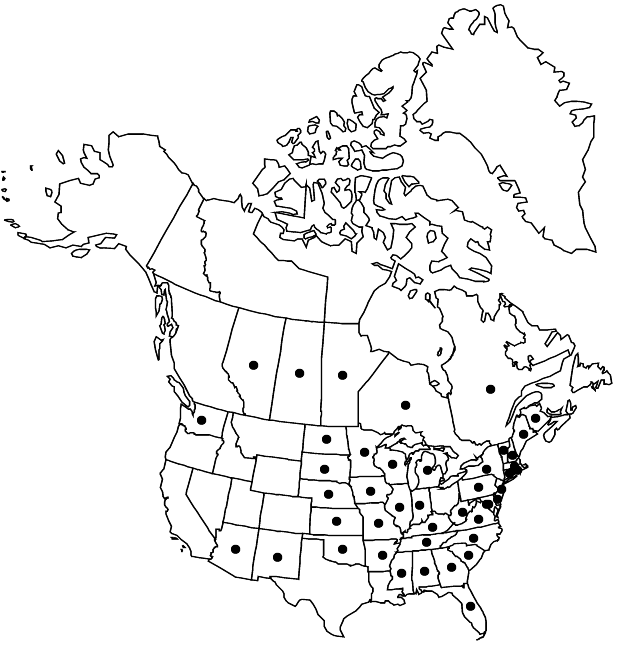Lysimachia hybrida
Fl. Bor.-Amer. 1: 126. 1803 ,.
Stems erect (rarely reclining), usually branching proximally, 2.5–10 dm, glabrous; rhizomes thickened; bulblets absent. Leaves opposite (distal sometimes whorled); petiole (0.2–) 0.6–4 cm, ciliate proximally, cilia 0.2–1 mm; blade elliptic-lanceolate to lanceolate or linear-lanceolate (sometimes ± folded along midvein), 2–18 × 0.5–3 cm, base rounded to cuneate, decurrent, margins entire, plane, eciliolate or ciliolate proximally, apex acute to acuminate, surfaces not punctate (sometimes with small dark pits, especially apically, but these not the resinous streaks referred to here as punctations), glabrous; venation pinnate-arcuate to obscurely pinnate to apparently single-veined (lateral-veins obscure), often on same plant. Inflorescences axillary in distal leaves, solitary flowers (rarely verticils). Pedicels 1–4.2 cm, glabrous to stipitate-glandular. Flowers: sepals 5, calyx not streaked, 4–8 mm, glabrous, lobes broadly lanceolate to ovate, margins thin; petals 5, corolla yellow, not streaked, rotate, 5–12 mm, lobes with margins sometimes slightly erose distally, apex apiculate, stipitate-glandular adaxially; filaments distinct or nearly so, shorter than corolla; staminodes 0.5–1.7 mm. Capsules 4–6.5 mm, not punctate or only slightly reddish-punctate, glabrous. 2n = 34.
Phenology: Flowering late summer–fall.
Habitat: Marshes, wet meadows, wet depressions, hammocks, swamps, stream banks
Elevation: 40-2300 m
Distribution

Alta., Man., N.B., Ont., Que., Sask., Ala., Ariz., Ark., Conn., Del., D.C., Fla., Ga., Ill., Ind., Iowa, Kans., Ky., Maine, Md., Mass., Mich., Minn., Miss., Mo., Nebr., N.H., N.J., N.Mex., N.Y., N.C., N.Dak., Okla., Pa., R.I., S.C., S.Dak., Tenn., Vt., Va., Wash., W.Va., Wis.
Discussion
Selected References
None.
Lower Taxa
"dm" is not declared as a valid unit of measurement for this property.